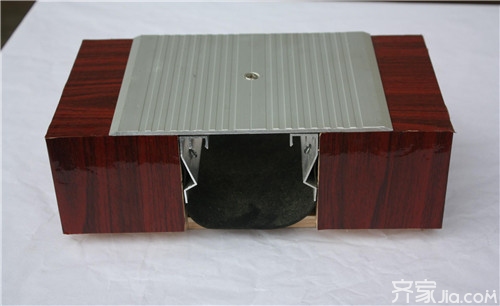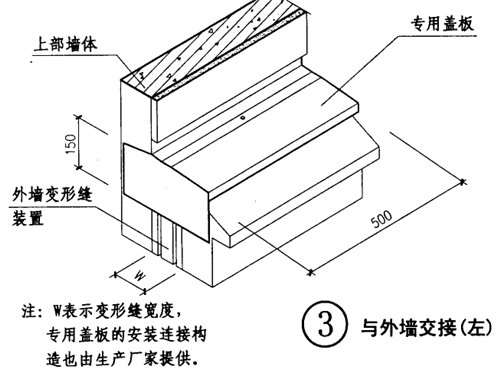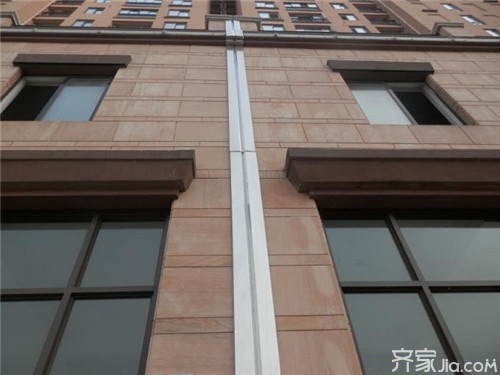So since it is so important that the size of the gap is certainly not free to leave, this kind of reserved space that divides the building vertically is called a deformation joint. What are the types of structural deformation joints? What is the size of building deformation joints? Let's take a look at it with everyone. What kinds of building deformation joints According to the external damage factors, the deformation joints are divided into three types, namely expansion joints, settlement joints and shockproof joints. (1) Expansion joints: Expansion joints, also called temperature joints, are set considering the effect of temperature changes on the building. The cold and hot changes in the climate will cause the building materials and structural components to swell and shrink. Buildings that are too long and too wide will have wall cracking and even damage due to this expansion and contraction. Therefore, the expansion joints of buildings that are too long and too wide are divided into several sections to ensure that each section swells freely, thereby avoiding the cracking of the wall. Expansion joints are 20~30mm wide and filled with elastic insulation material. (2) Settling joints: Settlement joints are set considering that the house may have uneven settlement in some places. When the height difference, load, structural form and foundation bearing capacity of the adjacent parts of the building are quite different or the plane shape of the building is complex or the connected buildings are built in phases, uneven settlement may occur in adjacent parts. Caused the entire building to crack, tilt or even collapse. Therefore, settling seams divide the building into a number of individual units, ensuring that each unit settles individually without being constrained by each other. The width of settlement joint is generally 30~120mm. (3) Anti-seismic joints: Anti-shock joints are set considering the damage of the earthquake to the building. For multi-story masonry buildings in seismic fortification areas, when the elevation of the elevation of the house is more than 6 meters, or the house has a wrong floor, and the height difference between floors is large, or the structural rigidity and quality of each part of the house are very different, During the earthquake, adjacent parts of the house may collide with each other and cause damage. Therefore, it is necessary to design earthquake-proof joints to divide the building into a number of independent units with a simple body and uniform structural rigidity in order to avoid earthquake damage. The width of the shockproof seam is generally 50~100mm. Structural deformation joints 1. Double-wall or double-column on both sides of the deformation joint - The method is simple, but easy to make the structural foundation on both sides of the joint eccentric (for the expansion joints can not be disconnected because of the foundation, so this problem can be eliminated). 2. Both sides of the deformation joint can be picked out with the horizontal member cantilever in the direction of the deformation joint. The base part is easy to disengage the distance. It is more convenient to locate the joint, and is especially suitable for settlement joints. 3, with a simple support of horizontal components for the transition process - used to connect the two buildings of the overhead walkway, etc., but in the earthquake-proof area should be used with caution. Building deformation joint size First of all, expansion joints. Expansion joints are mainly aimed at the thermal expansion and contraction of nature. Floors that are too wide or too high will surely change in size when exposed to heat. If it is a positive plate, internal parts of the house will change due to external temperature changes. Distortion caused the entire floor to break. The size of the expansion joint is generally 20 to 30 mm, and the gap is filled with a flexible insulating material. Second, shockproof joints. As the name implies, it is a gap that is set in order to protect the building from damage during earthquakes. Generally, when the house exceeds 6 meters or there is a wrong level between the houses, and the height of the connected floor differs greatly, it is necessary to reserve a shockproof joint. There is also a case in which it is necessary to reserve shockproof joints, that is, the structural materials and qualities of two adjacent spaces in the house do not need shockproof joints to increase cushioning at the same time. In simple terms, shockproof joints are simply divided into independent units according to the material or pattern in the space. Shockproof seams are 50 to 100 mm in size. Finally, settlement joints. When the building is too high, the weight of each location will certainly be different. Take the building where we live, the weight of the load-bearing wall and the light weight wall will certainly be different, and this will lead to a long time after the bearing wall and light weight. The height at which the wall sinks will be different, and it will be easy in the long run to cause the entire building to crack or even collapse. Settlement joints are designed to alleviate the large drop in sink position. The width of settlement joints varies from 30 mm to 120 mm depending on the size of the building. Editor's summary: The information about the types of building deformation joints and the size of the building deformation joints are introduced here for everyone. I hope this article will help everyone. If you still have something you don't understand, you can leave a message to Xiaobian at the bottom. We will answer your questions as soon as possible. Home improvement size data construction service building density Potassium Chlorate,High Purity Potassium Chlorate,Bulk Potassium Chlorate,General Potassium Chlorate Rucheng Sanxing Electric Chemical Co.,Ltd , https://www.3xchemical.com

